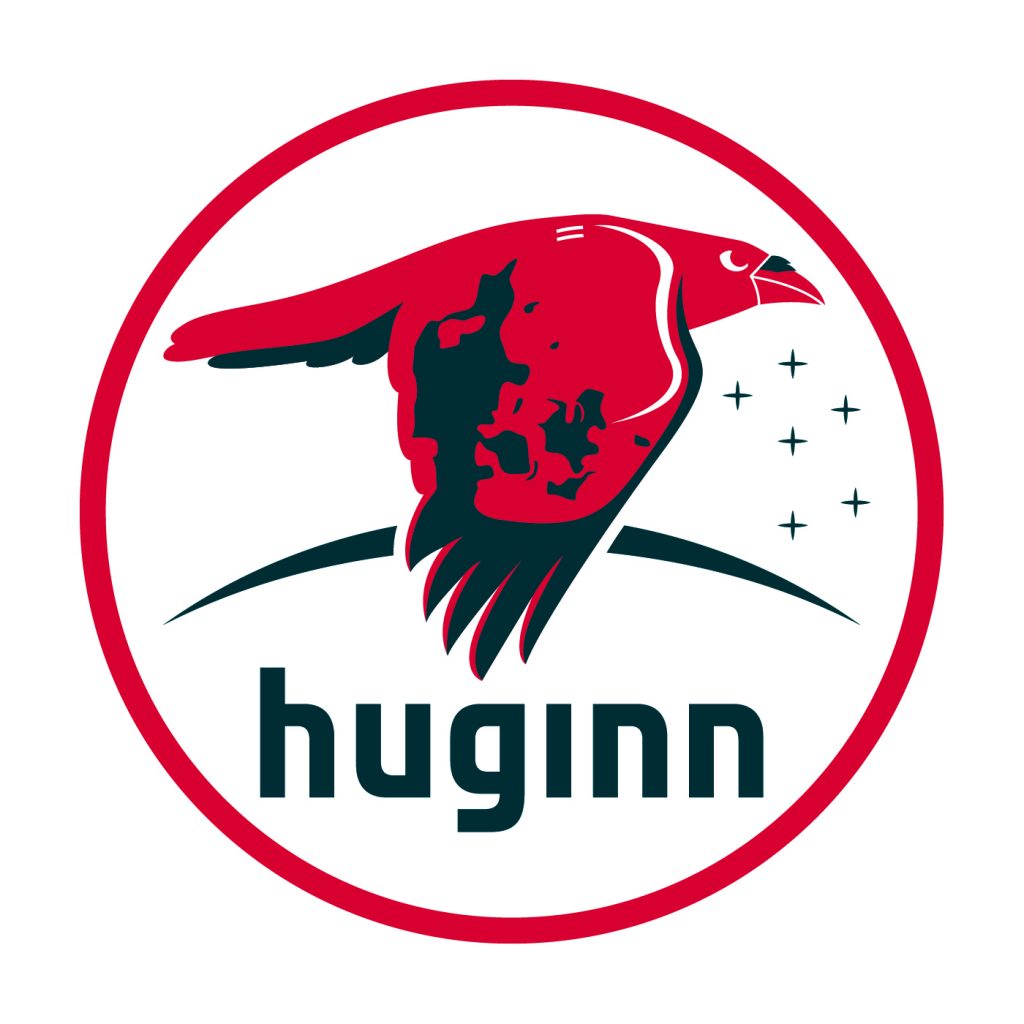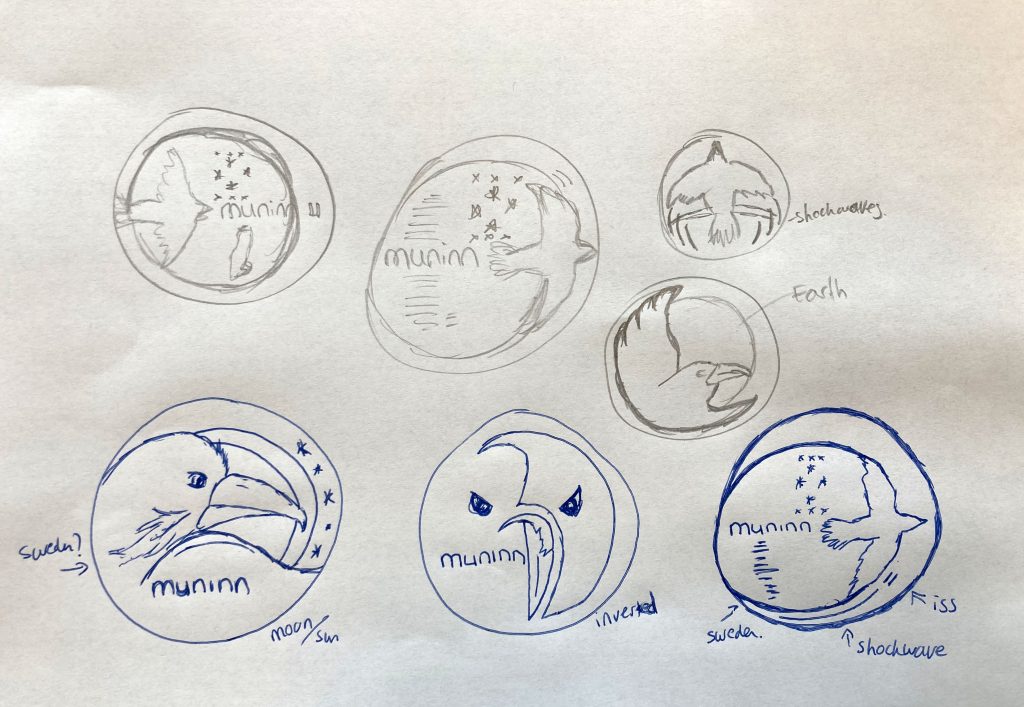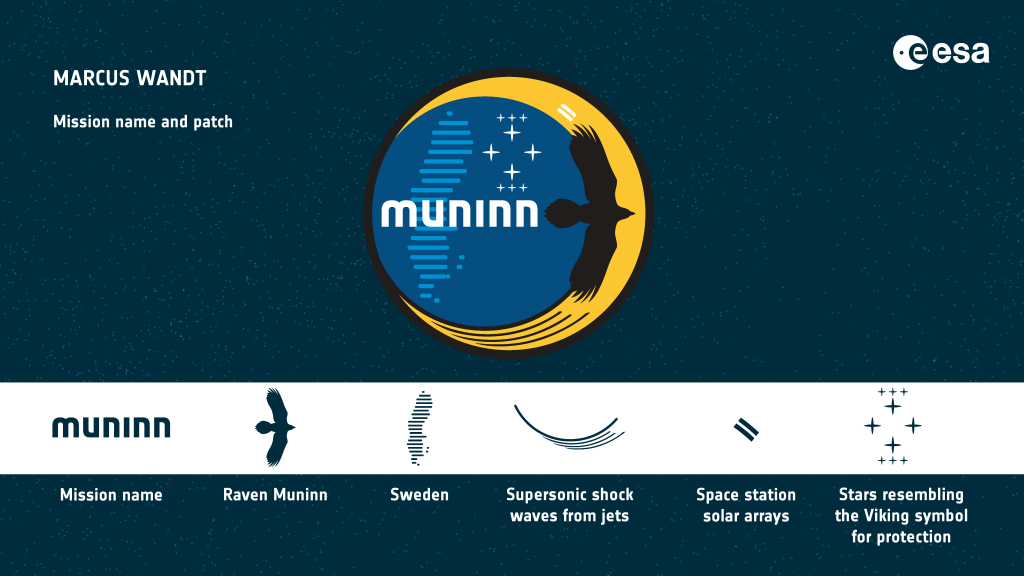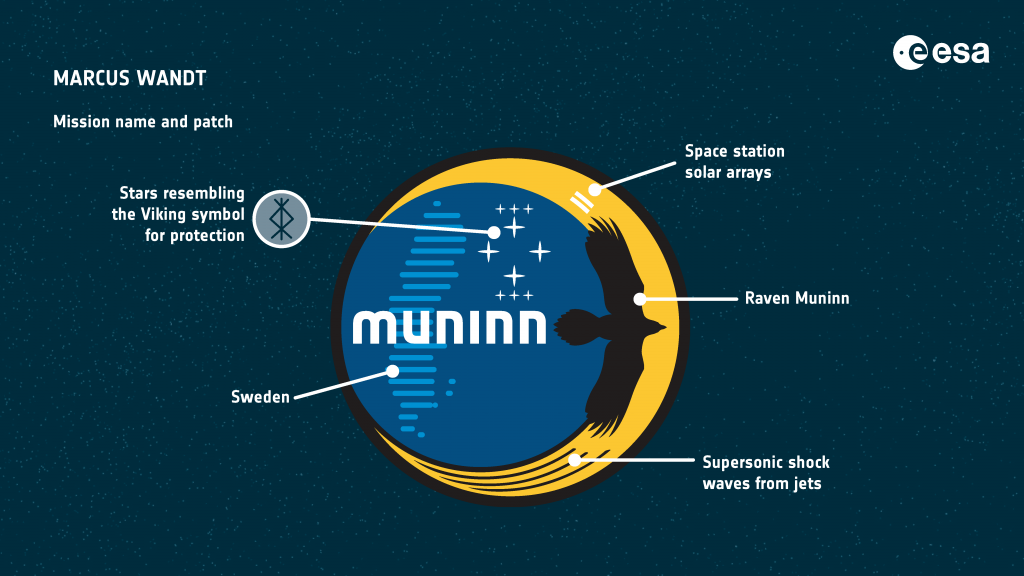These emblems tend to reflect the space flyer’s personality, the mission goals and the creativity of an artist.
Six decades after the first space patch, ESA’s graphic designer Karen Lochtenberg unveils the story behind making a patch for the stars.
The assignment
“We have an assignment for you, but you have to keep it secret,” said the voice at the other end of the phone. Karen was intrigued but let the caller talk. “We need you to make a new patch for an astronaut, but he has not been assigned to a mission yet,” she heard.
The job became the tenth mission patch of her career at the European Space Agency. According to her experience, she knew that the most important thing was to first talk with the astronaut. In this case, ESA project astronaut Marcus Wandt.
“We had our first meeting over a video call. Marcus was super excited about his job flying jets and his future spaceflight. At that point in time, we didn’t know much about the details of his mission, so it was tricky to define a first draft,” explains Karen.
His mission is called Muninn, a name coming from Norse mythology. According to the myth, two ravens serve as messengers and advisors to their god Odin, sharing all they see and hear.
Where to start
Karen and Marcus started with the basics – preferred colours, patches he liked, symbols for the mission and something personal.
Marcus had a clear idea of what he wanted to be featured: the blue and yellow colours, the International Space Station and a hint of Sweden, all with a neat design.
The graphic designer usually produces a first set of patches for the astronaut to choose as a starting point. “It was a challenge to make it distinctive from the one designed for ESA astronaut Andreas Mogensen, who also has a raven in his Huginn patch,” says Karen.
She showed Marcus four patch designs in the first round, three of them were drafts from the earlier stages of the Huginn design.
“What was interesting is that he chose the only one from that batch that was a completely new design,” she explains.
From there, iterations started. Following Marcus’s feedback, Karen moved the elements around and played with the colours.
Since Marcus’s flight is set for the beginning of 2024, there was not much time to lose. “We designed this patch in record time. Thanks to our great teamwork and his quick decision-making, we got a final version in just six weeks,” she explains. As a reference, other patches like Proxima took her up to six months to finalise.
“I am very happy with the result. It’s a patch that stands out and has a lot of meaning,” she adds.
The patch
The raven Muninn glides around Earth to share the knowledge collected during Marcus’s mission. The dark blue circle represents Earth and includes lighter lines depicting Marcus’s homeland, Sweden. The patch displays the two colours of the Swedish flag – blue and yellow.
The two white stripes next to Muninn’s upper wing refer to the distinctive solar arrays of a space station, Marcus’s future home in space.
The stars resemble a Viking symbol for protection. The stars also remind Marcus of the beauty of snowflakes in cold winter days in Sweden.
The lines from Muninn’s lower wing are a reference to supersonic shock waves from jets. Marcus is a test pilot for the Swedish Air Force.
A European collection
If you want to know more, check the European human spaceflight patch collection – a chronological overview of the main flight and mission patches worn by European astronauts, from the latest missions to the earliest.









